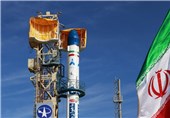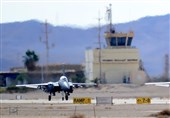Iran to Launch Homegrown Remote-Sensing Satellite Next Year
TEHRAN (Tasnim) – Iran plans to send its first domestically-made remote-sensing satellite “Tolou 1 (Rise 1)” into orbit in the first half of the next Iranian calendar year, which will begin on March 20, 2016, the head of Iran’s National Space Center announced.
Speaking in a press conference in Tehran on Wednesday, Manouchehr Manteqi said a contract for conducting three projects on space studies has been signed by Defense Minister Brigadier General Hossein Dehghan and Vice-President for Science and Technology Affairs Sorena Sattari on the sidelines of the cabinet meeting today.
“The third project features designing and producing the Islamic Republic of Iran’s first remote-sensing satellite, whose first generation is named Tolou 1 (Rise 1),” he said.
“The satellite has an imaging capability with an accuracy range of 25 square meters at a distance of 500 kilometers from the Earth,” Manteqi added.
He further said the construction of the satellite will be completed by the end of the current Iranian year and “efforts will be made” to launch it in the first half of the next year.
Iran successfully launched into orbit its first indigenous data-processing satellite, Omid (Hope), back on February 2, 2009.
As part of a comprehensive plan to develop its space program, Iran also successfully launched its second satellite, dubbed Rassad (Observation), into the earth’s orbit in June 2011. Rassad’s mission was to take images of the earth and transmit them along with telemetry information to ground stations.
The country’s third domestically-built Navid-e Elm-o Sanat (Harbinger of Science and Industry) satellite was sent into orbit in February 2012.
In January 2013, Iran sent a monkey into space aboard an indigenous bio-capsule code-named Pishgam (Pioneer).
And later in December 2013, the country’s scientists successfully sent a monkey, called ‘Fargam’ or Auspicious, into space aboard Pajoheshan (Research) indigenous rocket and returned the live simian back to earth safely.






